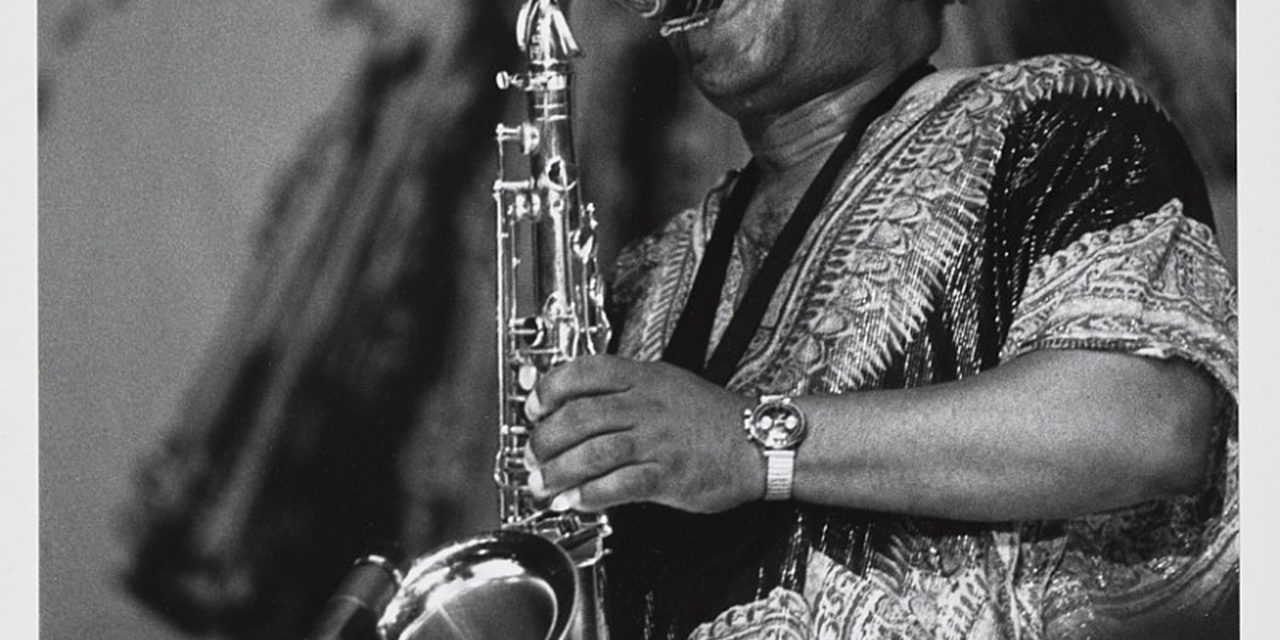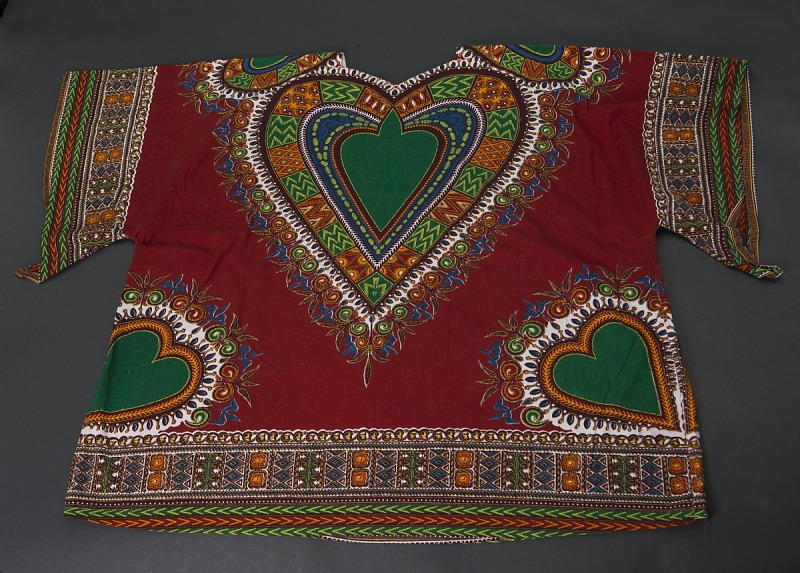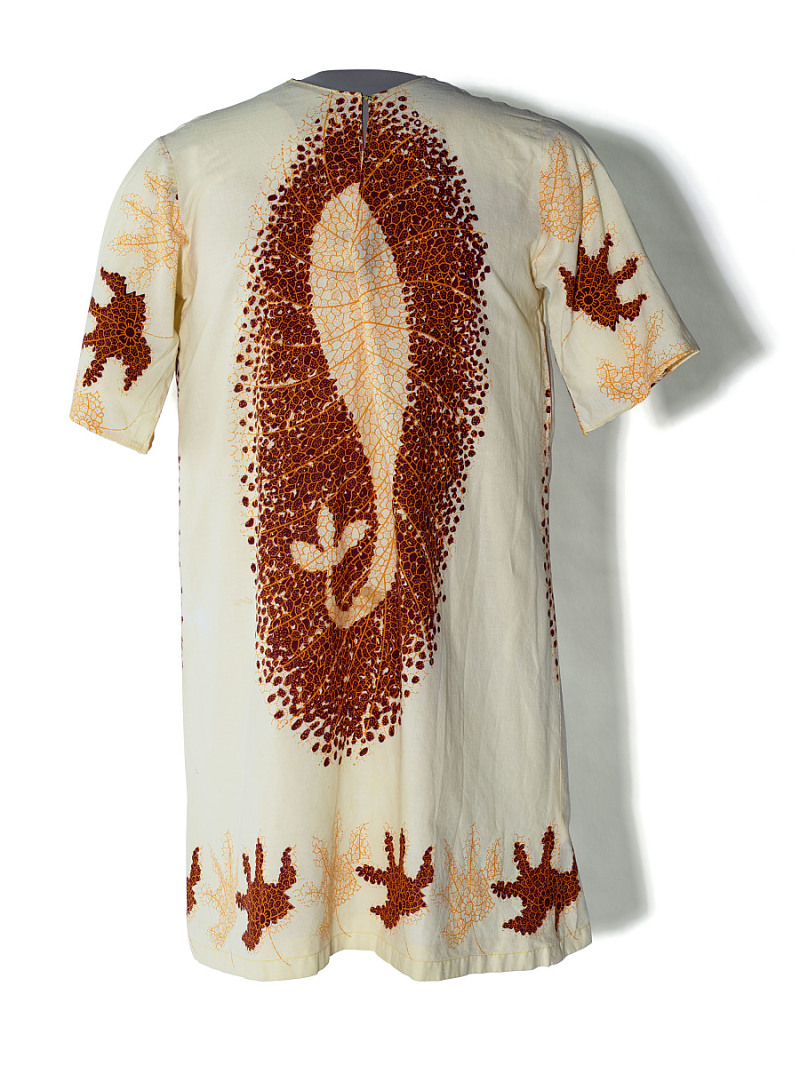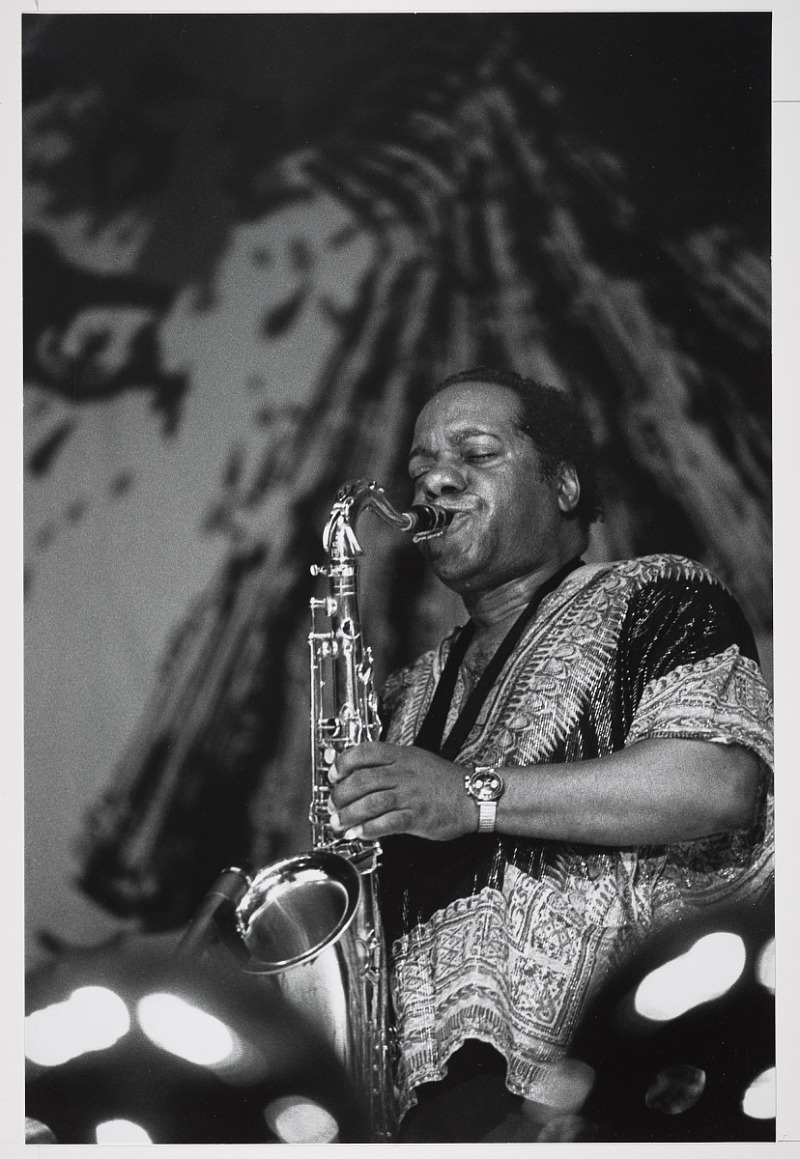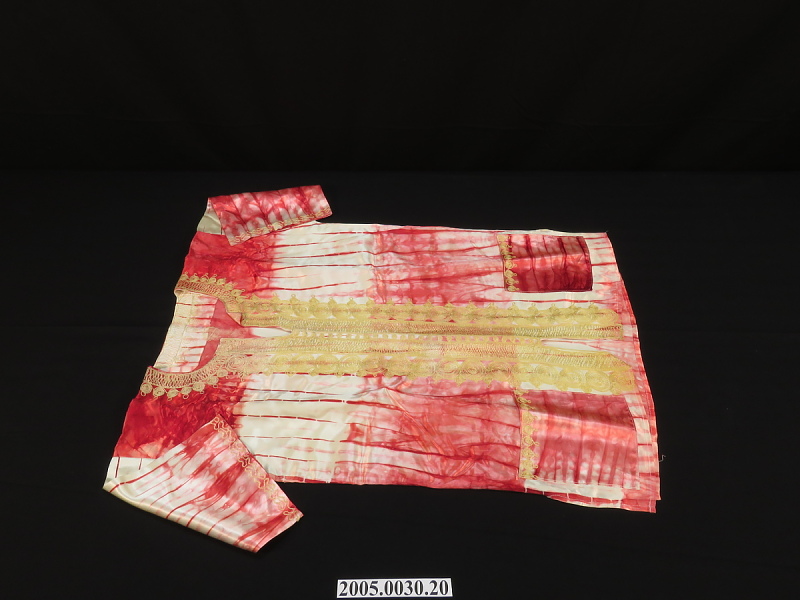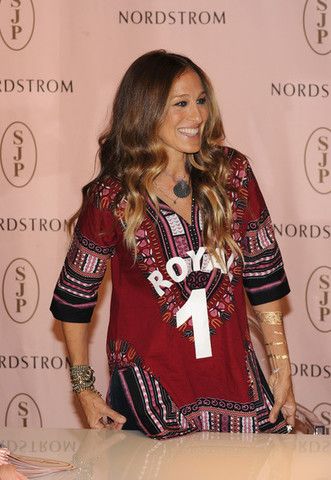A loose-fitting pullover tunic traditionally worn in West African cultures that was adopted by African diasporic communities as a symbol of African heritage in the 1960s and then more widely worn as a popular item of “ethnic” fashion.
The Details
The Encyclopedia of Clothing and Fashion (2005) offers a brief definition of the dashiki and its etymology:
“A dashiki is a loose-fitting, pullover shirt usually sewn from colorful, African-inspired cotton prints or from solid color fabrics, often with patch pockets and embroidery at the neckline and cuffs. The dashiki appeared on the American fashion scene during the 1960s when embraced by the black pride and white counterculture movements. ‘Dashiki’ is a loanword from the West African Yoruba term danshiki, which refers to a short, sleeveless tunic worn by men.” (Wolff 346)
Author Norma Wolff goes on to describe its origins and its rise in American culture:
“The Yoruba borrowed the word from the Hausa dan ciki (literally “underneath”), which refers to a short tunic worn by males under larger robes. The Yoruba danshiki, a work garment, was originally sewn from hand-woven strip cloth. It has deep-cut armholes with pockets below and four gussets set to create a flare at the hem. Similar tunics found in Dogon burial caves in Mali date to the twelfth and thirteenth centuries (Bolland). In many parts of West Africa today such tunics of hand-or machine-woven textiles (with or without sleeves and gussets) are worn with matching trousers as street clothes. In the 1960s, the dashiki appeared in the American ethnic fashion inventory, along with other Afrocentric clothing styles, possibly from the example of African students and African diplomats at the United Nations in New York (Neves 1966). A unisex garment, the American dashiki varies from a sleeveless tunic to the more common pullover shirt or caftan with short or dangling bat sleeves. Both sexes wear the shirt, and women wear short or full-length dashiki dresses.“
A dashiki in the collection of Smithsonian National Museum of African American History and Culture (Fig. 1) has a heart-shaped pattern on the v-neck and on the sides of the tunic.
A 1970 dashiki dress (Fig. 2) was designed and worn by Fath Davis Ruffins, curator of the National Museum of American History since 1981. She made a matching headtie to wear with it, which was a common practice as both were worn “by many blacks in the West to show pride in their African heritage” (Hill 282). Jazz musician Eddie Harris (Fig. 3) wore a printed dashiki while playing saxophone at a performance in Hollywood, Florida in 1983.
For those without design skills, “Specialty boutiques and direct mail retailers offered interpretations of the dashiki for both men and women” (Hill 282). The Smithsonian has also has a mass manufactured version of a dashiki with kimono sleeves (Fig. 4) in its collection. The use of patterning at the neck, hem and sleeve edges is typical; in this example the pattern is part of the fabric design, but traditionally such decoration would have been embroidered.
As Ethnic Dress in the United States (2014) notes a “dashiki is hip length, collarless, and often made with geometric embroidery along the neck” (Colburn 97). A dashiki worn by Mongo Santamaria (Fig. 5) features white ground fabric with red dyed areas, and gold embroidery on neckline, front, sleeves, and tops of the pockets.
Dashikis can be made out of a wide array of fabrics including “African print brocade, silk, lace, suiting, or cotton fabrics” (Colburn 97).
Fig. 1 - Designer unknown. Dashiki with Heart-Shaped Pattern, 20th century. Smithsonian Institution: Anacostia Community Museum: Ethel Lois Payne Collection, 1991.0076.0102. Source: Smithsonian
Fig. 2 - Faith Davis Ruffins (American, 1954-). Dashiki, 1970. Washington: Smithsonian National Museum of American History, 1984.0826.02. Gift of Faith Davis Ruffins. Source: Smithsonian
Fig. 3 - David D. Spitzer (American). Eddie Harris, 1983. Washington: Smithsonian National Museum of African American History and Culture. Gift of David d. Spitzer. Source: Smithsonian
Fig. 4 - Manufacturer unknown. Dashiki, 20th century. Cotton; 69.9 x 55.9 cm (27 1/2 x 22 in). Washington: Smithsonian National Museum of African American History and Culture Collection, 2014.99. Gift of Kimberly Hunley. Source: Smithsonian
Fig. 5 - Designer unknown. Dashiki, 20th century. Washington: Smithsonian: National Museum of American History, 2005.0030.20. Gift of Nancy Santamaria. Source: Smithsonian
Its Afterlife
D
ashikis are still commonly worn and recently had a revival in popularity according to Culture Trip: “Since 2012 to about 2016 when it peaked, the symbolic garment became the trendiest casual/street wear for people of African descent worldwide and many celebrities took no time in joining with the celebration of identity through fashion.”
In a 2016 photograph (Fig. 6), you can see a modern version of the dashiki, in bright purple with a hood, pockets and a zipper going down the middle. In figure 7, actress Sarah Jessica Parker is seen wearing a dashiki designed by Kevin Afuwah for Royal Kulture at a Nordstrom event. In 2014, Jhene Aiko also wore a dashiki to promote her new single, “The Pressure,” in Vogue (Fig. 8).
Fig. 6 - Gerard H. Gaskin (Trinidadian American, 1965-). Justin, Unity Human Rights Ball, Manhattan, NY, November 11, 2016. Digital photograph. Washington: Smithsonian National Museum of African American History and Culture, 2019.44.2. Source: Smithsonian
Fig. 7 - Kevin Afuwah. Sarah Jessica Parker wearing a Royal Kulture dashiki, 2014/2015. Source: Pinterest
Fig. 8 - Photographer unknown. Jhene Aiko wearing a dashiki, 2014. Source: Vogue
References:
- Colburn, Carol Ann, and Helen Koo. Ethnic Dress in the United States: A Cultural Encyclopedia. United States: Rowman & Littlefield Publishers, 2014. https://www.google.com/books/edition/Ethnic_Dress_in_the_United_States/tiEvBQAAQBAJ?hl=en&gbpv=1&dq=dashiki&pg=PA97
- Guiducci, Mark. “Jhené Aiko Premieres a Single Off Her Debut Album.” Vogue, https://www.vogue.com/article/jhene-aiko-new-single-the-pressure.
- Hill, Daniel Delis. History of World Costume and Fashion. Upper Saddle River, NJ: Pearson Prentice Hall, 2011. http://www.worldcat.org/oclc/768100950
- Okoh, Lize. “How the Dashiki from West Africa Became Cool Again.” Culture Trip, https://theculturetrip.com/africa/articles/how-the-dashiki-from-west-africa-became-cool-again/.
- Wolff, Norma H. “Dashiki.” In Encyclopedia of Clothing and Fashion, edited by Valerie Steele, 346-348. Vol. 1. Detroit, MI: Charles Scribner’s Sons, 2005. Gale eBooks (accessed August 4, 2022). https://link.gale.com/apps/doc/CX3427500159/GVRL?u=fitsuny&sid=bookmark-GVRL&xid=817d03f6.

